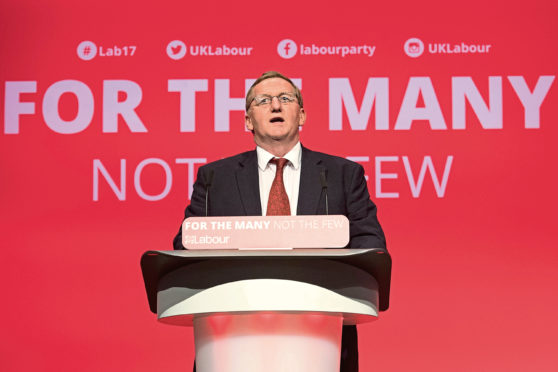Scottish Labour should support “the sovereign right of the Scottish people” to choose the country’s future, according to the party’s constitution spokesman.
Alex Rowley wrote in a pamphlet that he and his colleagues should look to diverge from the strict unionism of the Conservatives and Liberal Democrats.
But he said a referendum should only take place if two-thirds of MSPs support it.
Mr Rowley was the second Scottish Labour member to speak out on the issue after health spokeswoman Monica Lennon said the “future of Scotland must be decided by the people of Scotland”.
He stopped short of support for independence, instead appearing to advocate the “home rule” position touted by leader Richard Leonard in recent weeks.
That would result in substantial powers being devolved to Holyrood – leaving areas such as macroeconomics, defence and foreign policy in Westminster.
Mr Rowley wrote: “There are some within the Scottish Labour group who want us to rule out any referendum for the foreseeable future.
“This would put us alongside the Tories and illiberal Liberals and would play direct into the hands of Nicola Sturgeon.”
The former deputy leader also said he did not believe the Scottish Government had a mandate for another vote through their past electoral successes but said the issue is not one that should be determined by Westminster.
He added: “My own view is that the option of the power sitting in the Scottish Parliament with a requirement of a two-thirds majority to trigger any future referendum is worth serious consideration.”
According to the pamphlet, the issue should be put to members of the Scottish Labour Party and not decided by a “small band of MSPs”.
Votes from 85 MSPs would be needed to make up two-thirds – meaning pro-Union voices would have to be persuaded to supplement the 68 independence-supporting MSPs from the SNP and Scottish Green Party.
The Labour MSP claimed the first minister was “not serious” about holding another vote this year.
Mr Rowley suggested the SNP was looking to make the 2021 Holyrood election into a vote on Scotland’s constitutional future – something he claimed was a “deliberate deflection tactic” from the party’s record in government.
He added: “Right now in Scotland there is no majority demanding a referendum so let us focus on our vision for Scotland.”
SNP deputy leader Keith Brown said: “This latest plan is reminiscent of the infamous 40% rule in 1979 – where Labour conspired to block a Scottish Assembly despite a majority of Scots voting for one.
“While it’s welcome that figures in Labour are increasingly realising that Scotland’s future must be for the Scottish people to decide, they need to ditch this plan to tie Holyrood’s hands.”
See comment on page 28
